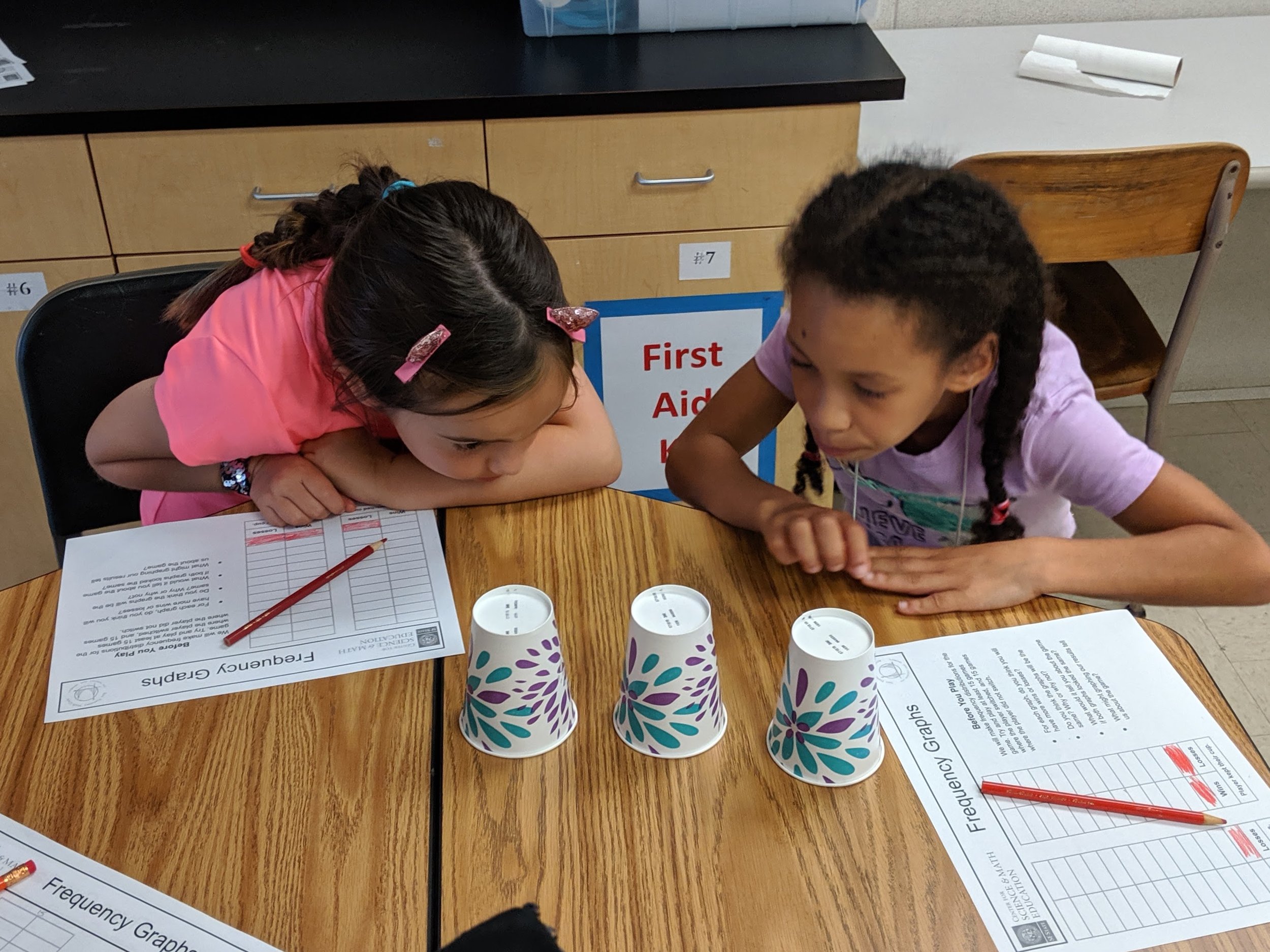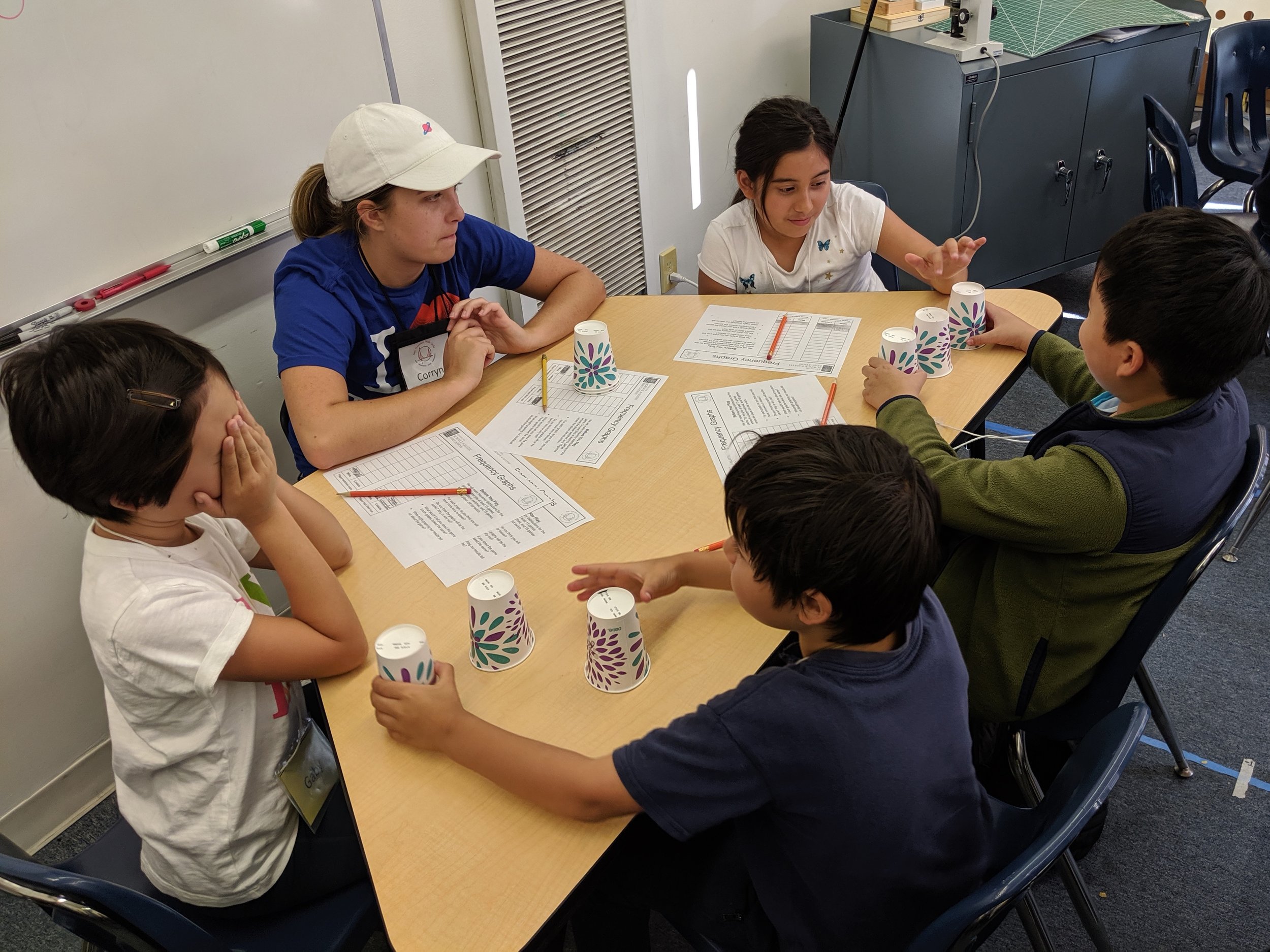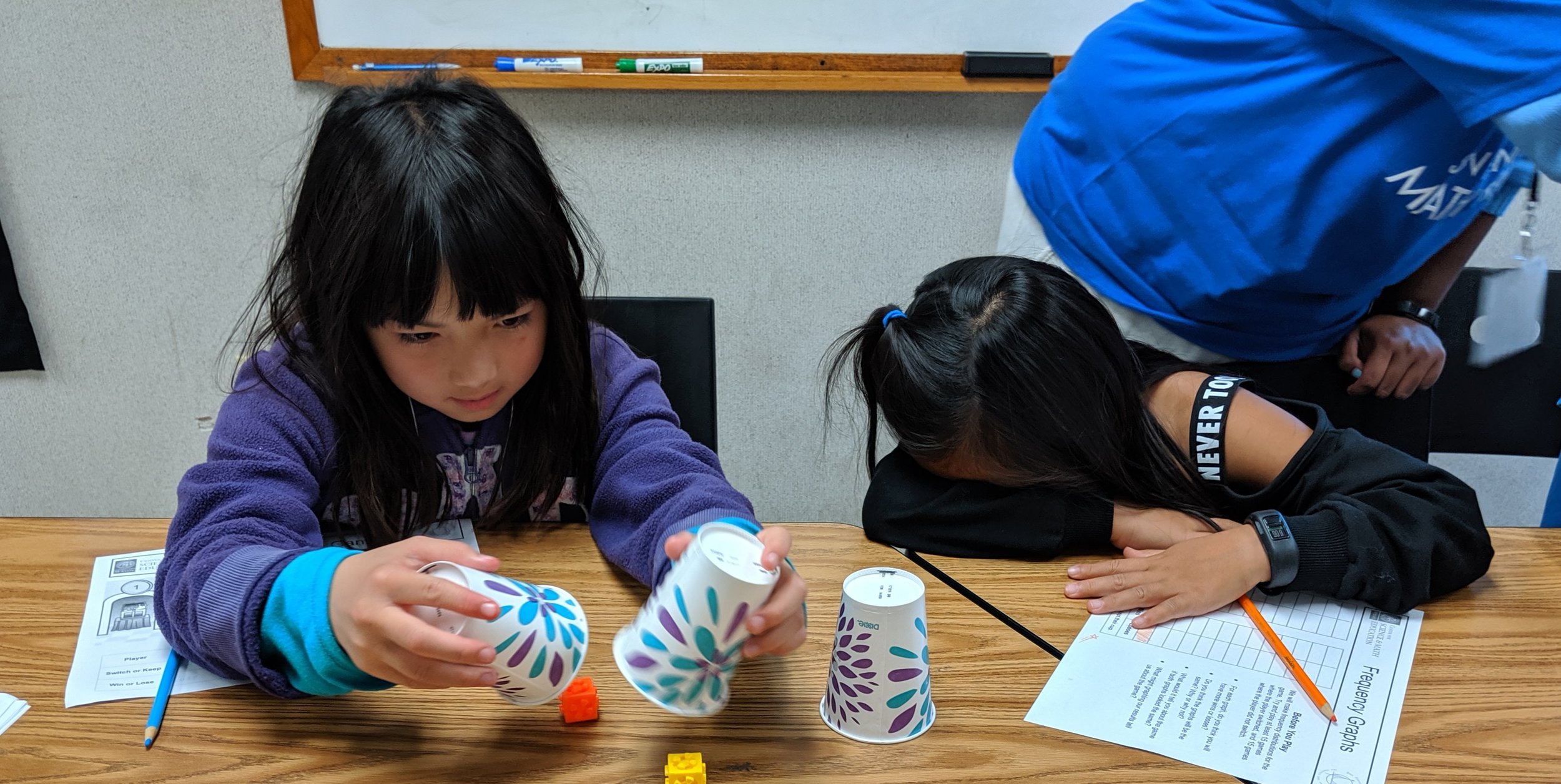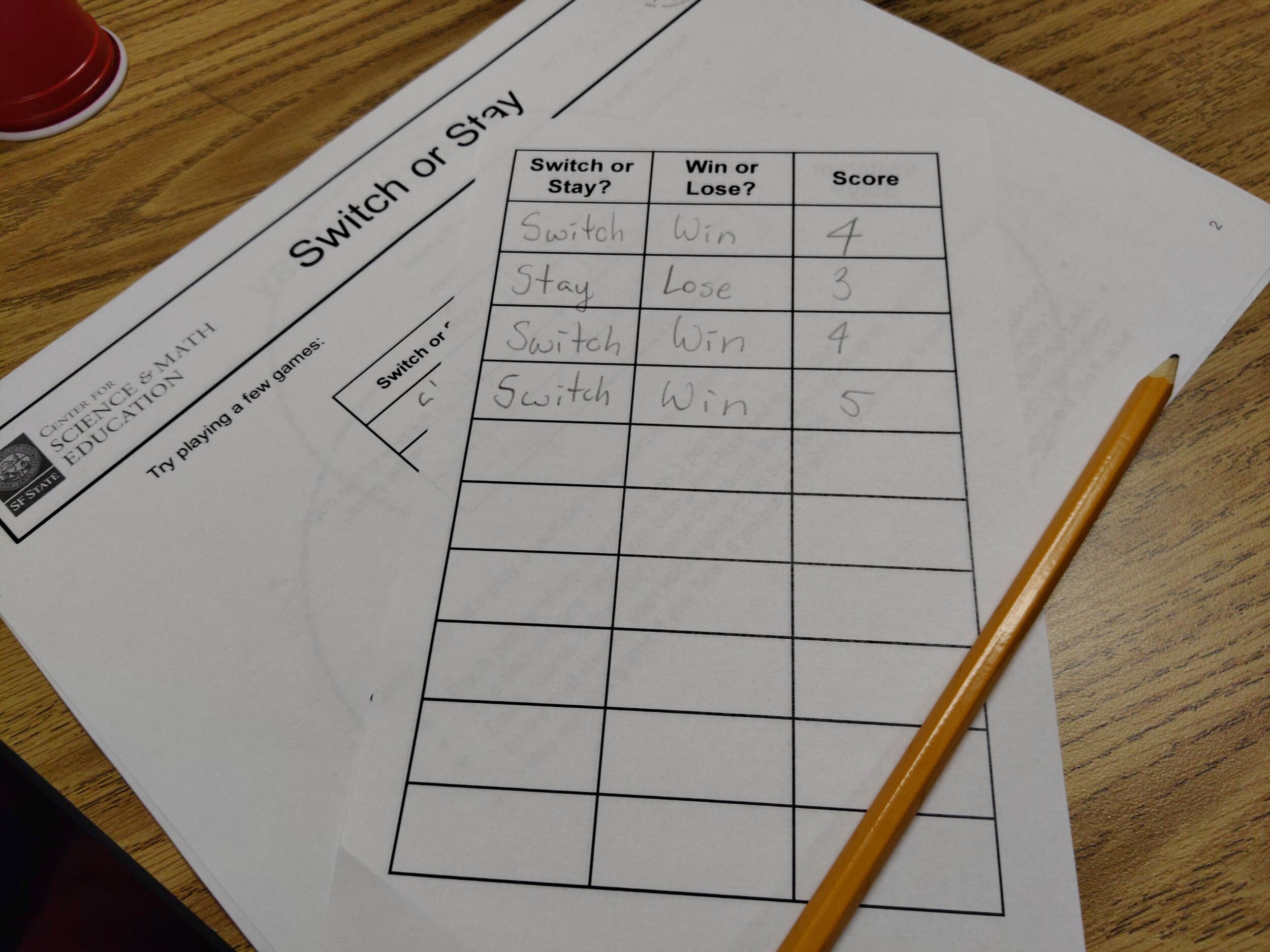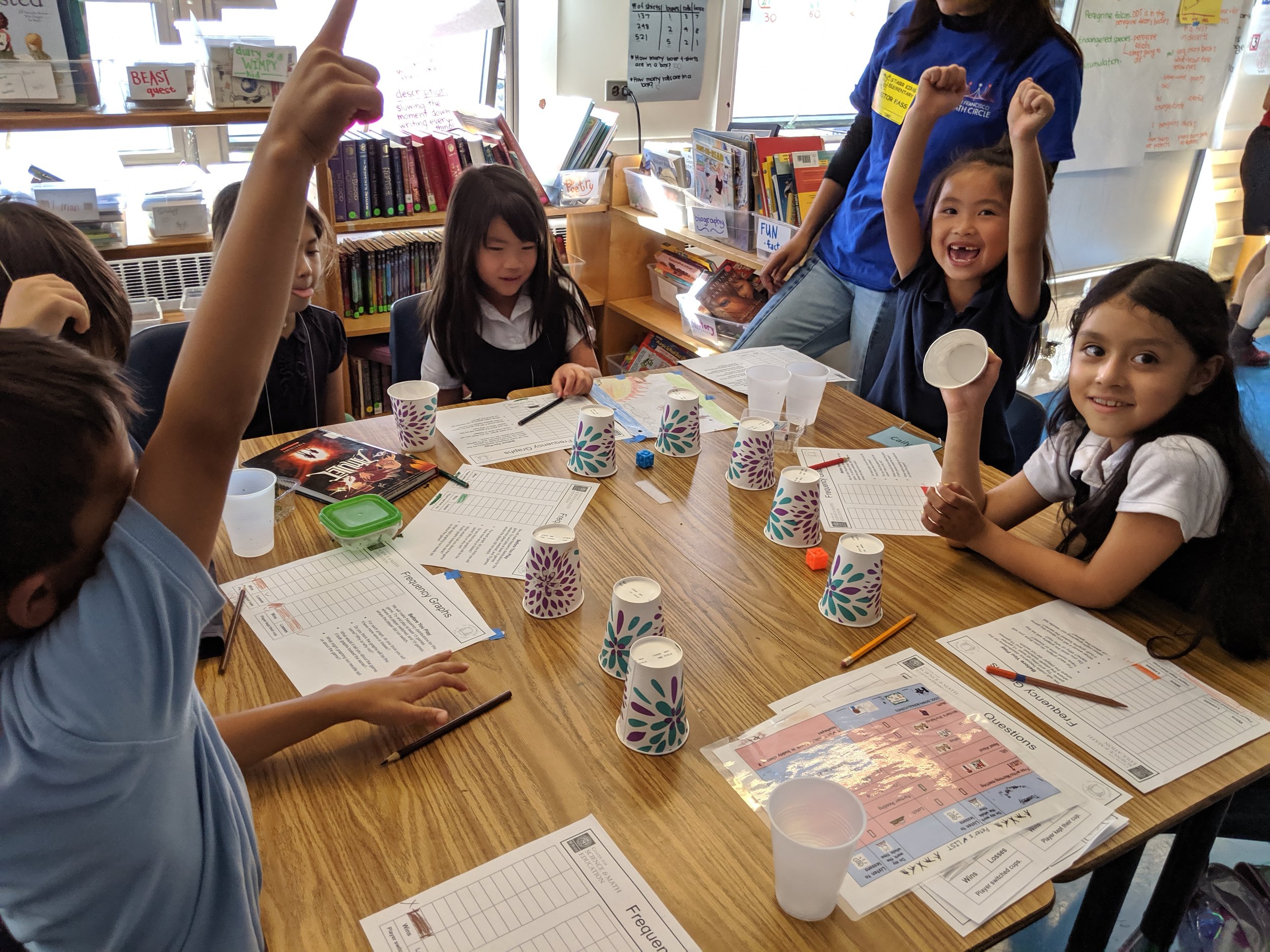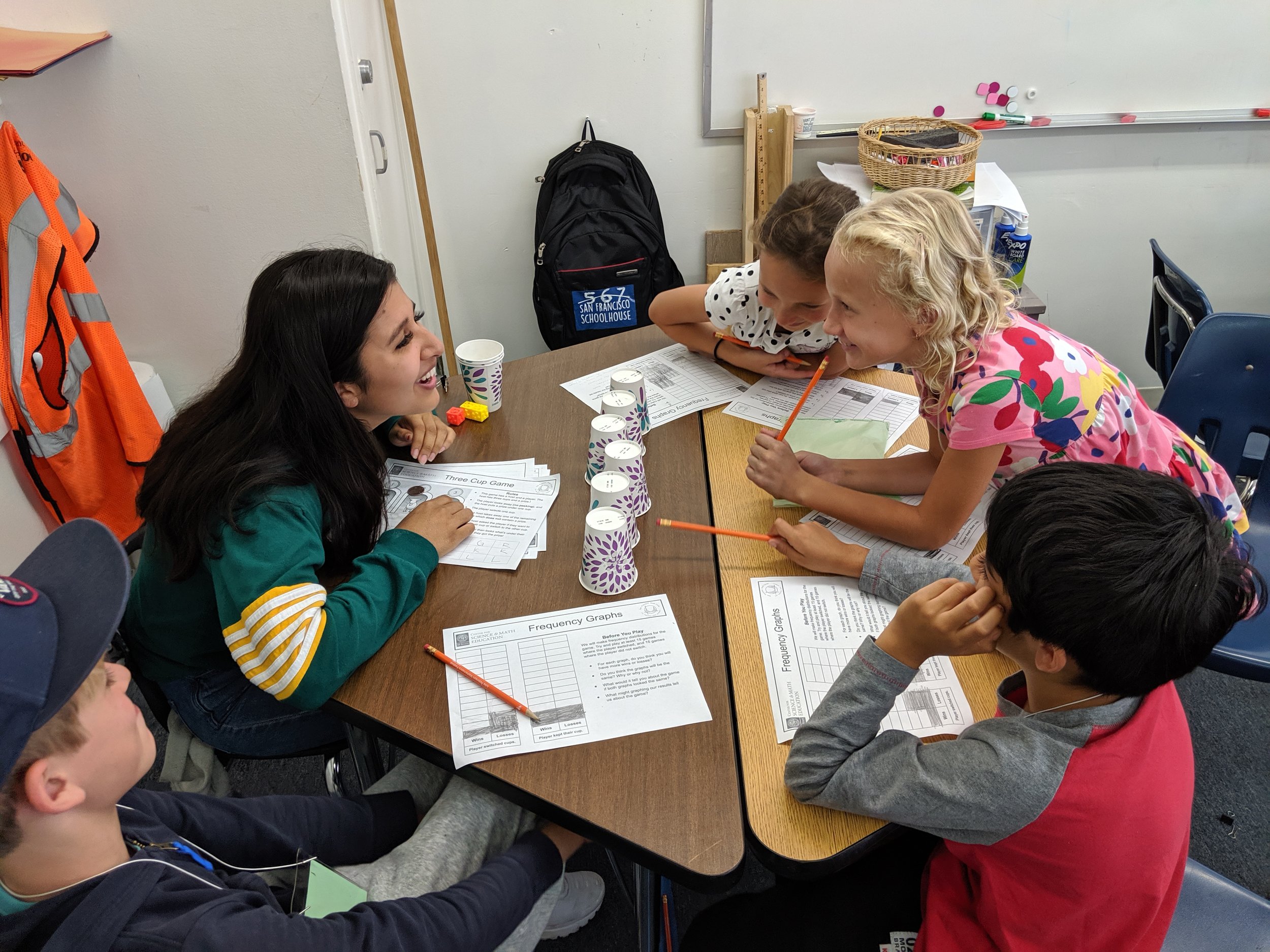Switch or Stay
How it works
Switch or Stay is a 2-player game. Here’s how to play:
- There are three cups, which are turned upside down.
- One player (the Hider) hides a prize under one of the cups.
- The other player (the Finder) picks the cup they think contains the prize.
- The Hider then picks a cup that is not the Finder’s cup and that doesn’t contain the prize, and reveals to the Finder that the prize is not under that cup.
- The Hider then gives the Finder the option to switch to a different cup or to stay with their original cup.
- After the Finder decides whether to switch or stay, the Hider reveals which cup contains the prize. If the Finder’s cup contains the prize, they win!
Do you think it’s better to switch or stay? Or are your chances of winning the same no matter what you do?
In this activity, students start by playing Switch or Stay with 3 cups. Then they try playing with 4 cups — in this case, the Hider picks two cups that are not the Finder’s cup and that don’t contain the prize and reveals to the Finder that the prize isn’t under those cups before asking the Finder if they want to switch or stay. They analyze whether it’s better to switch or stay with 4 cups, and also whether it’s better (if you’re the Finder) to play with 3 cups or 4 cups.
Why we like this activity
- It’s fun! Students enjoy playing and thinking about the game.
- It helps students develop probabilistic and statistical reasoning.
It requires students to engage in mathematical habits of mind:
Using logic / looking for patterns / finding and using strategies / making and testing predictions / understanding and explaining when trying to figure out whether you’re more likely to win if you switch to a different cup or stay with the same cup, or whether your chances are the same no matter what you do.
Using logic / looking for patterns / / making and testing predictions / understanding and explaining when trying to figure out whether the Finder is more likely to win if there are 4 cups or when there are 3 cups, or whether the chances are the same.
- It has a low floor and a high ceiling: Students can start playing the game by just guessing, but it’s possible to find a better strategy, and there’s a lot to discover about how the odds change according to the number of cups you’re playing with.


